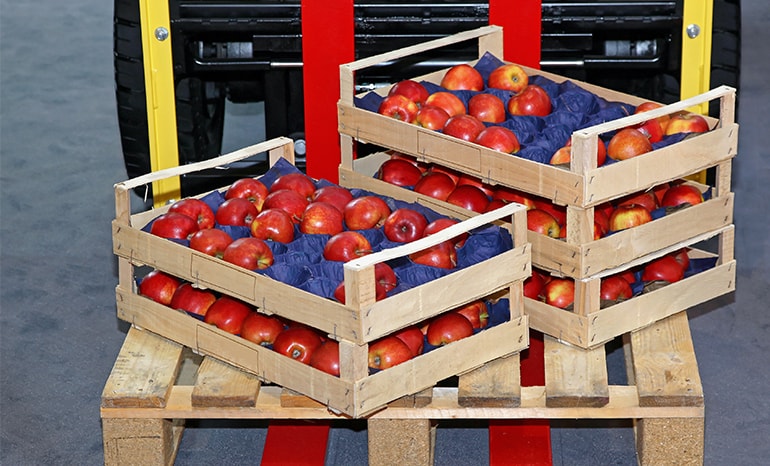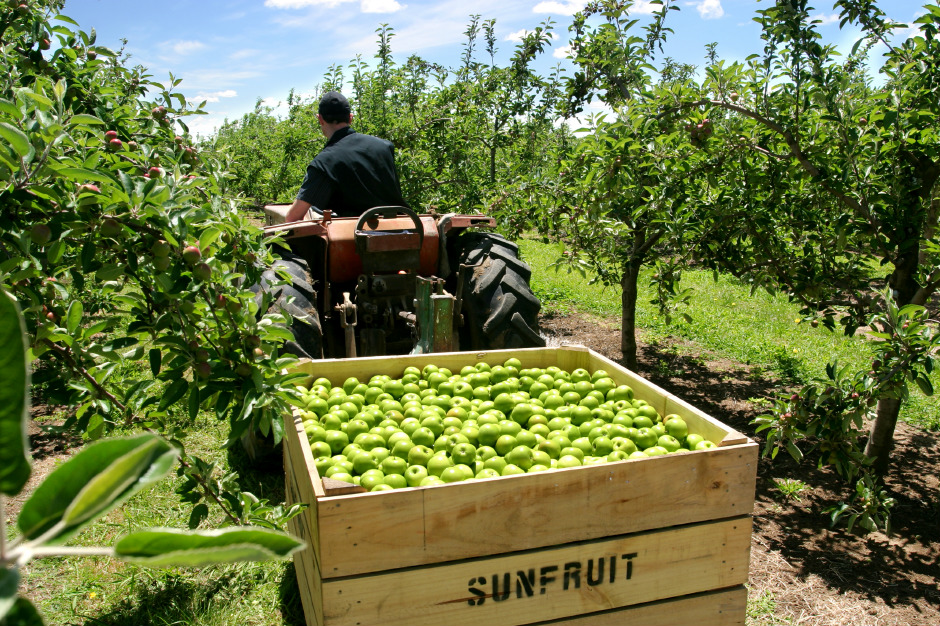From Farm-to-Forklift: Pallets in the Agricultural Industry
Discover how farmers growing produce get the fruits and vegetables you consume from the field to your fork.
Discover how farmers growing produce get the fruits and vegetables you consume from the field to your fork.

Today, our industry colleagues from around the country are touring harvesting and agricultural processing facilities located in Salinas, California, as part of the NWPCA Fall Plant Tours. These farm-to-forklift tours will show how pallets, wood containers, and related machinery are used in the transport of fresh food and produce including grapes and vegetables. For those who could not attend, this post provides a brief overview of how the agriculture industry and, in particular, farmers growing produce, get the fruits and vegetables you consume from the field to your fork.
Sturdy wooden pallet bins made from milled lumber or plywood are can be used to move produce from the field or orchard to the packing house. Pallet bins have the capacity to hold between 12 and upwards of 50 bushels. Although the height may vary, the length and width is typically 48 x 40 inches. Double-wide pallet bins also exist, which are 48 x 80 inches.
When it’s time to ship, almost all produce packages are palletized. In fact, approximately 190 of the 700 million pallets manufactured each year are used by the produce industry in the United States. Many are single-use pallets of varying sizes, which are discarded after a single use. But, in recent years, there have been efforts to standardize the pallet size used in the industry to reduce waste and lower costs. While not official, the 48 x 40-inch pallet (also known as the GMA pallet) has emerged as the frontrunner. Using pallets of this size simplifies handling since most pallet racks and other equipment are designed for use with a standard pallet. Transporting pallets of a standard size also results in more efficient use of space.

Depending on the size of the produce package, a single pallet may hold between 20 and 100+ individual packages. The packages must be loosely stacked to permit air circulation. Because of this, they are secured with plastic straps, tape, stretch film, or plastic netting to prevent shifting. If straps are used, corner tabs are affixed to prevent straps from crushing packages and the delicate contents therein.
Finally, the produce is on its way to a grocery store near you. Bon Appétit!
For more information on standards for wood pallets and containers, visit the National Wooden Pallet and Container Association. For agriculture pallet bins, consult the American Society of Agricultural Engineers.
And, as always, if you’re looking for pallet solutions, contact the pros at Rose Pallet!
 Aug 01, 2018
Aug 01, 2018
Sisters Mia Allen and Amy Olson are partners and co-founders of Rose Pallet. While they have spent years together in...
continue reading double_arrow May 13, 2020
May 13, 2020
Thankfully, parts of the country are starting to re-open; but for students in many states, school is closed for the remainder of the year. If you’re searching for something fun and creative to do with your kids, look no further.
continue reading double_arrow






